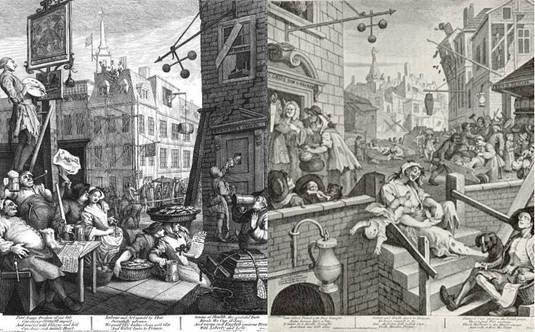This article is more than 1 year old
Ferocious fungus imperils future of British gin and tonic
'I'll have mine with a twist of Phytophthora austrocedrae, my good man'
Juniper berries, the crucial ingredient in the quintessential British distilled spirit, gin, and thus critical to the revered pick-me-up, gin and tonic, are under attack.
"Juniper is in serious trouble," a spokeswoman for Plantlife Scotland told The Telegraph on Wednesday. "One of only three native conifers in Britain, not only does it face a new deadly fungal disease, Phytophthora austrocedrae, it has also disappeared from over one-third of Britain where it was previously found."
According to Plantlife's Tim Wilkins, many southern English counties had lost 60 to 70 per cent of their populations of juniper before the heroic efforts of that organization began to bring it back from near extinction. But that progress is now threatened by Phytophthora austrocedrae.
Not only are about 45 per cent of Scottish juniper bushes at risk of being destroyed by the fungus, The Telegraph reports, but much of the existing stock is suffering from old age, and others bushes are being dispatched by "booming rabbit and vole populations."
Should the juniper bush disappear from Blighty, however, you'll still be able to pick up a bottle of Gordon's for a weekend romp with the boys – most commercial gin is formulated these days with berries procured from Eastern European suppliers.
But the loss of British juniper should not be taken lightly. Not only would it weaken the worldwide genetic stock of the blessed berry bushes, thus leaving existing sources perhaps more susceptible to future infestations, but also it would be a cultural blow to a country which has had a long – albeit sometimes tumultuous – relationship with the national spirit.

Hogarth's rolicking Beer Street (left) contrasted with derelict Gin Lane (right), which has at its centerpiece
an alcoholic mother likely modeled after the tragic story of Judith Dufour (click to enlarge)
In the first half of the 18th century, in fact, gin was – as one wag here at Vulture Annex put it – "the crack of its time." During the Gin Craze, it has been estimated that the average Londoner downed between 50 and 60 liters of "Mother's Ruin" per year.
The first Gin Act was passed in 1736 in an effort to stem the torrents of gin flowing down the gullets of Londoners. Unfortunately, it had an effect much like what the US experiment with Prohibition did nearly two centuries later – it drove the manufacture of gin underground.
A second try to stop the tsunami of the cheap intoxicant was made in the Gin Act of 1751, but it wasn't until decades later – the Sale of Beer Act in 1830, which removed the tax on beer – that the scourge of what dry moralists blamed for misery, poverty, prostitution, murder, theft, and worse, began to wane.
Today, gin has lost its crack-like rep in the UK, and is even famously beloved by the royal family. Now that "this royal throne of kings, this sceptred isle, this earth of majesty, this seat of Mars, this other Eden" has learned to drink, as the interminable beer commercials in the States say, "responsibly", it would be cruel of Mother Nature to strip it of the berries that make a cool G&T such a blessing. ®
